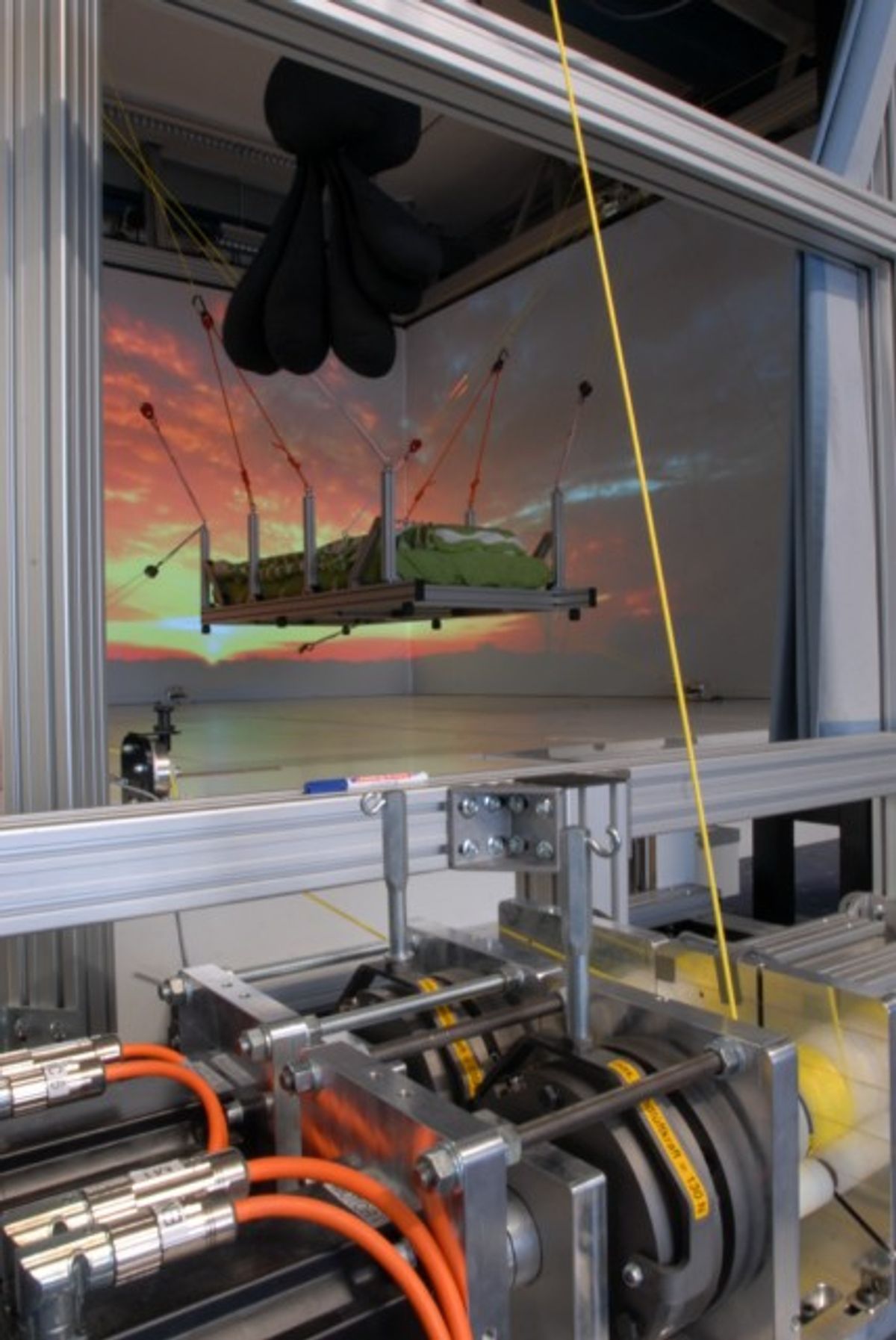I've recently had the chance to visit ETH Zurich's M3-Lab, which is part of the Sensory Motor Systems group headed by Robert Riener, and which contains one of the world's most advanced rope robots. The r3 uses ropes guided over deflection units and pulled by motorized winches to move end effectors to any point in space. A modular winch setup allows payloads of up to 100kg and top speeds of up to 18m/s. The necessary stiffness is provided by using Dyneema ropes with very little stretch (<1%) and a very stiff aluminum frame (see pictures below).
In addition, the r3 can also function as a tendon-based haptic interface: Combining information from absolute position measurement units and high-resolution motor encoders allows to determine absolute winch positions at any given time. Force sensors on each rope, and a sampling frequency of 4 kHz complete the setup, making the robot a very versatile platform.
The r3 is built around a large CAVE (Cave Augmented Virtual Environment), equipped with multiple large projection screens and an advanced 3D sound system to provide a realistic and immersive simulation of environments.
The Somnomat project shown in the video above uses the r3 system to conduct sleep research. Here is what Joachim von Zitzewitz, the lead researcher of the project, has to say on the Somnomat's motivation:
A child is rocked to sleep. Adults drowse in a rattling train. But why? Not much information about vestibular feedback on sleep is found in literature. Therefore, we want to investigate the underlying mechanisms by moving the test subject in different degrees of freedom while he/she is sleeping. Additionally, we focus on the influence of other modalities (acoustic, brightness of light) on sleep.
As in other sleep research projects, the additional equipment on the Somnomat monitors several physiological data such as heart rate, breathing frequency, EEG. Future studies starting in 2011 will investigate correlations between these data and the vestibular stimulation - a system identification of the test person if you will.
Bad timing of my visit did not allow me to test-sleep the bed (yet!), because the robot is also concurrently used in two other projects that focus on highly different dynamics: The rowing simulator recreates the experience of rowing on a river, down to the dynamics of the oar entering the water and the crowds cheering from the shore. The athlete sits in a rowing scull mounted at the center of the CAVE, with the r3 robot's ropes connected to the outer ends of the oar. As you row, the robot displays oar forces in 3D in accordance with the user's movements.
A third project focuses on understanding motor learning of fast movements by using the robot to support a tennis-like 3D-movement. It implements different assistive controllers, such as position control or path control (i.e., controller restricting the user's movement to a given trajectory in space).
With single rope axis generating peak forces of up to 900 N, guaranteeing the r3's safety has been a major focus, and a series of safety measures have been implemented (e.g., all drive trains are equipped with electro-mechanical brakes which block the winch in case of an emergency) and tested with dummies (see my favorite picture at the end of the post).
Thanks Joachim!











